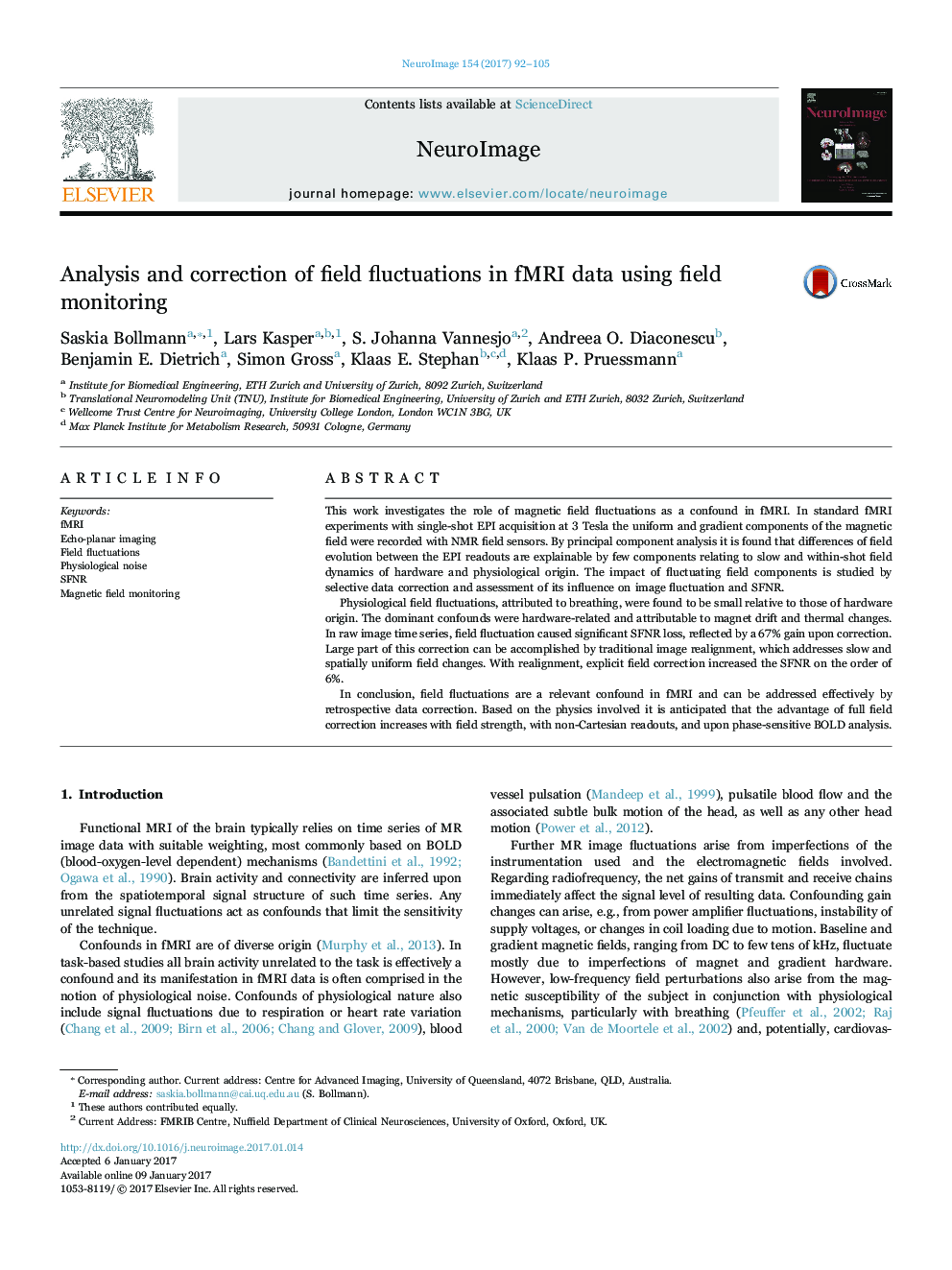| کد مقاله | کد نشریه | سال انتشار | مقاله انگلیسی | نسخه تمام متن |
|---|---|---|---|---|
| 5631059 | 1580856 | 2017 | 14 صفحه PDF | دانلود رایگان |

- The role of magnetic field fluctuations in fMRI was studied by concurrent field recording in a typical EPI protocol at 3T.
- Field fluctuations were dominated by hardware-related mechanisms.
- The effects of physiological field fluctuations were small relative to other physiological causes of image fluctuation.
- Field fluctuations caused SFNR loss in raw image time series, reflected by a 67% gain upon correction (6% with realignment).
- Concurrent field recording is proven feasible in vivo, enabling full field correction without navigators or realignment.
This work investigates the role of magnetic field fluctuations as a confound in fMRI. In standard fMRI experiments with single-shot EPI acquisition at 3 Tesla the uniform and gradient components of the magnetic field were recorded with NMR field sensors. By principal component analysis it is found that differences of field evolution between the EPI readouts are explainable by few components relating to slow and within-shot field dynamics of hardware and physiological origin. The impact of fluctuating field components is studied by selective data correction and assessment of its influence on image fluctuation and SFNR.Physiological field fluctuations, attributed to breathing, were found to be small relative to those of hardware origin. The dominant confounds were hardware-related and attributable to magnet drift and thermal changes. In raw image time series, field fluctuation caused significant SFNR loss, reflected by a 67% gain upon correction. Large part of this correction can be accomplished by traditional image realignment, which addresses slow and spatially uniform field changes. With realignment, explicit field correction increased the SFNR on the order of 6%.In conclusion, field fluctuations are a relevant confound in fMRI and can be addressed effectively by retrospective data correction. Based on the physics involved it is anticipated that the advantage of full field correction increases with field strength, with non-Cartesian readouts, and upon phase-sensitive BOLD analysis.
Journal: NeuroImage - Volume 154, 1 July 2017, Pages 92-105